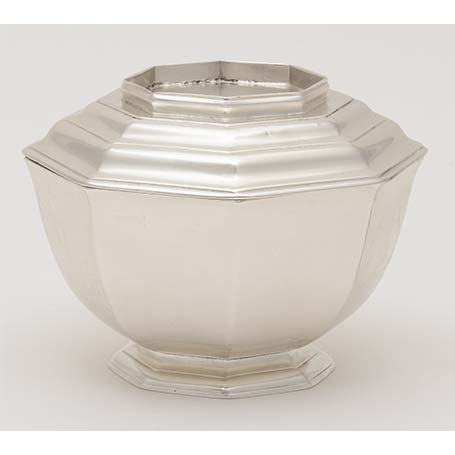Sugar Bowl and Cover
Before sugar ever filled this bowl, enslaved and indentured laborers in Central and South America mined the silver used in its creation. Sugar became a highly desirable commodity in the eighteenth century, driven especially by the rise in the consumption of tea, coffee, and desserts. The Caribbean colonies exported hundreds of tons of sugar each year, and plantation owners exploited the labor of millions of enslaved Africans, increasing sugar output and driving down prices for consumers.
By the 1800s, sugar was more widely affordable than ever before, entangling even more individuals with the Atlantic slave trade.
Sugar bowl and cover
Joseph Richardson Sr.
Philadelphia, Pennsylvania; 1736−48
Silver
Museum purchase with funds provided by the Henry Francis du Pont Collectors Circle 2015.0004.002a,b

